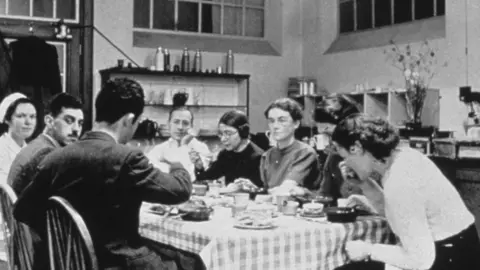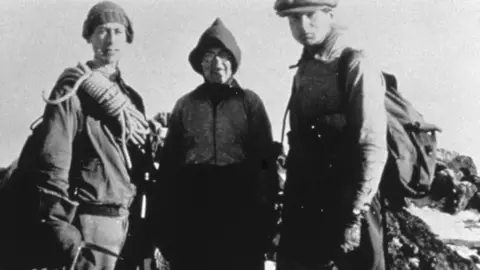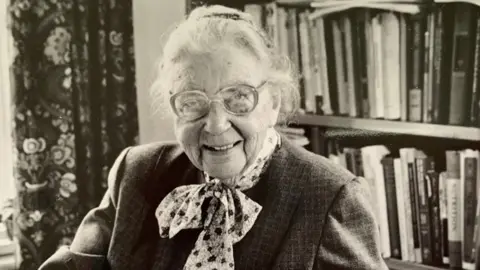Elsie Widdowson: World War Two food rationing 'genius' gets blue plaque
 Dr Margaret Ashwell
Dr Margaret AshwellA "scientific genius" whose work shaped Britain's World War Two food rationing is being honoured with a blue plaque.
Elsie Widdowson and her colleague Robert McCance showed it was "possible to live on a very simple diet" of bread, vegetables and potatoes.
Food rationing began in early 1940. It gave each person a scientifically-devised weekly allocation of food.
The plaque is being unveiled at a former bakery near Dr Widdowson's home in Barrington near Cambridge.
 Dr Margaret Ashwell
Dr Margaret Ashwell Cambridge PPF/Dr Margaret Ashwell
Cambridge PPF/Dr Margaret AshwellWhen war broke out in 1939, Dr Widdowson and Dr McCance felt they must do something to further the war effort, according to her biographer Margaret Ashwell.
The pair - whose academic partnership began in 1934 when Dr Widdowson told him his values for the amount of sugars in apples were too low - had moved to the Department of Experimental Medicine at Cambridge University in 1938.
Dr Ashwell said: "They and a number of their colleagues ate only calcium-fortified bread, vegetables and potatoes.
"They then went on a rigorous course of cycling and mountain climbing in the Lake District in January 1940 to test out the diet's adequacy and delivered a report to the government in March which was used to develop the rationing policy.
"Of course, rations never got quite as bad as that - they were testing out an extreme."
 Dr Margaret Ashwell
Dr Margaret AshwellOne of the most important things they advised on was the need to add calcium - in the form of powered chalk - to bread.

Rationing in World War Two
- It began on 8 January 1940 when bacon, butter and sugar were rationed
- By 1942, an adult's typical weekly food ration included 4oz (113g) bacon and ham, 2oz (56g) butter, 2oz cheese, 8oz (226g) sugar and 1 fresh egg
- Everyone in Britain was given a ration book, which they registered at a shop of their choice
- The rations aimed to ensure a fair distribution of food and kept the population healthy
Sources: Historic-UK.com

Dr Widdowson studied chemistry at Imperial College, London.
When she died aged 92 in 2000, she left money to Imperial for women scientists to enable to them to balance their research with family life.
Dr Ashwell said: "Elsie's scientific genius was balanced by her overflowing human warmth and a genuine interest in people.
"Many of us are so lucky to have benefitted from both."

Find BBC News: East of England on Facebook, Instagram and Twitter. If you have a story suggestion email [email protected]
